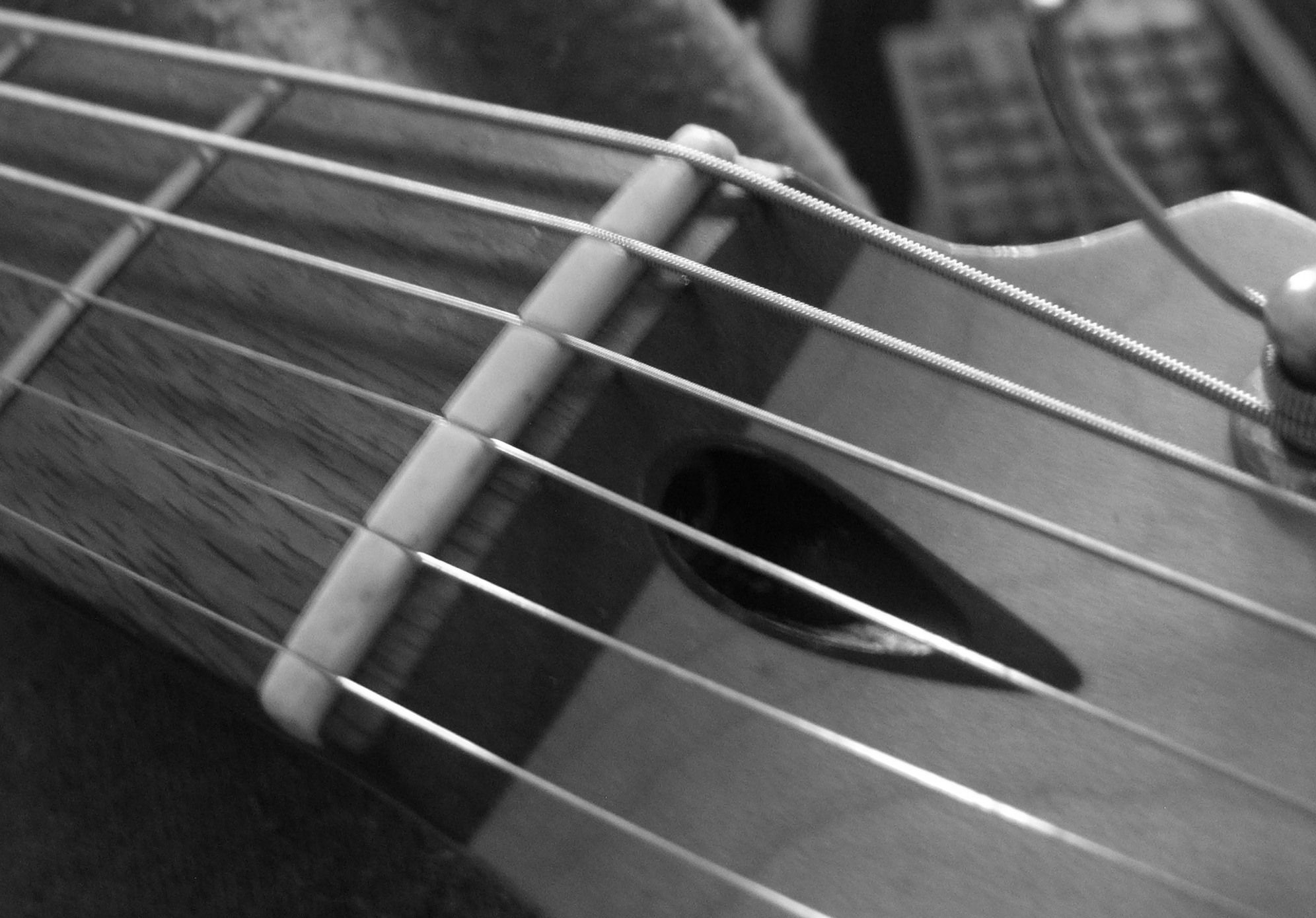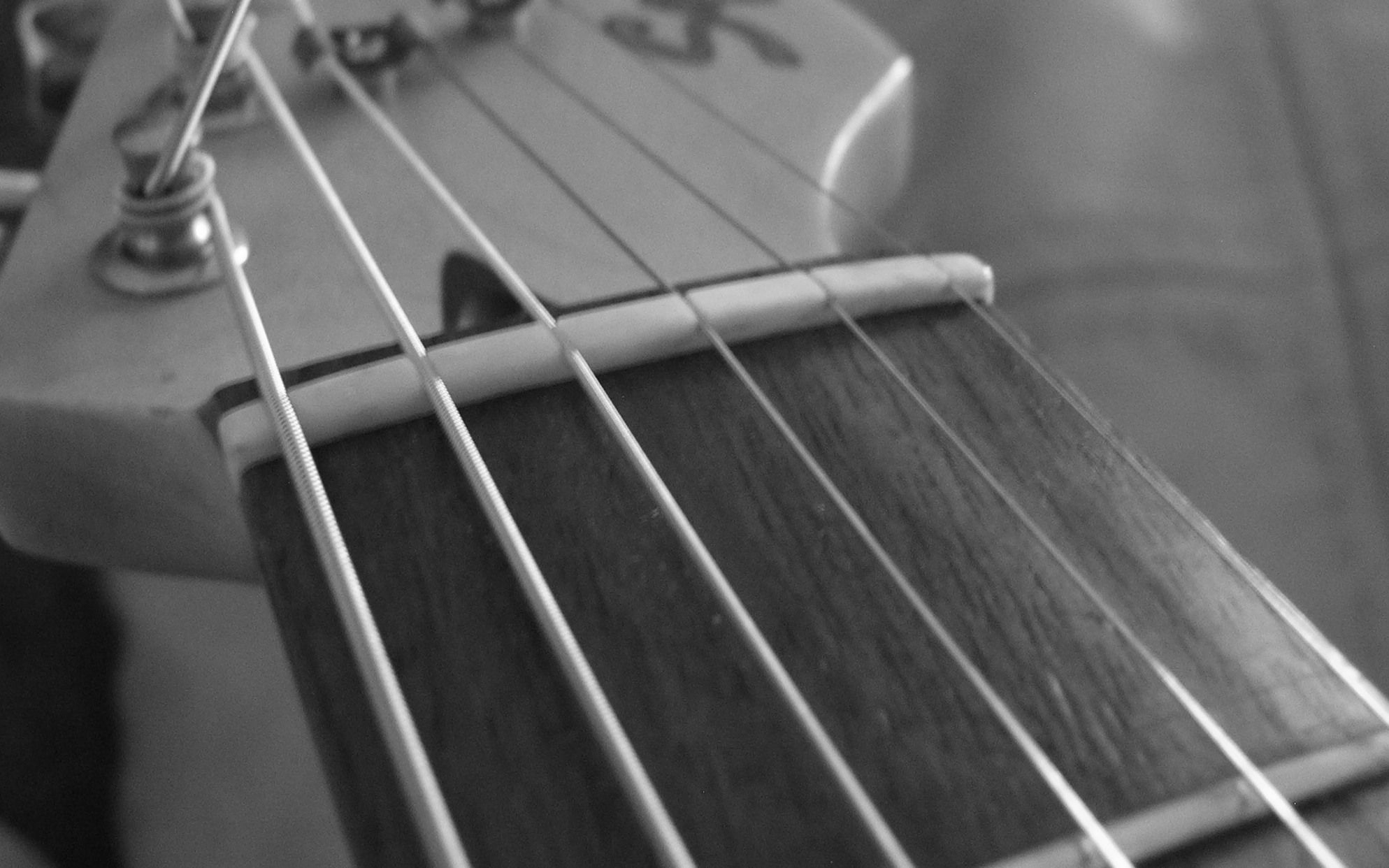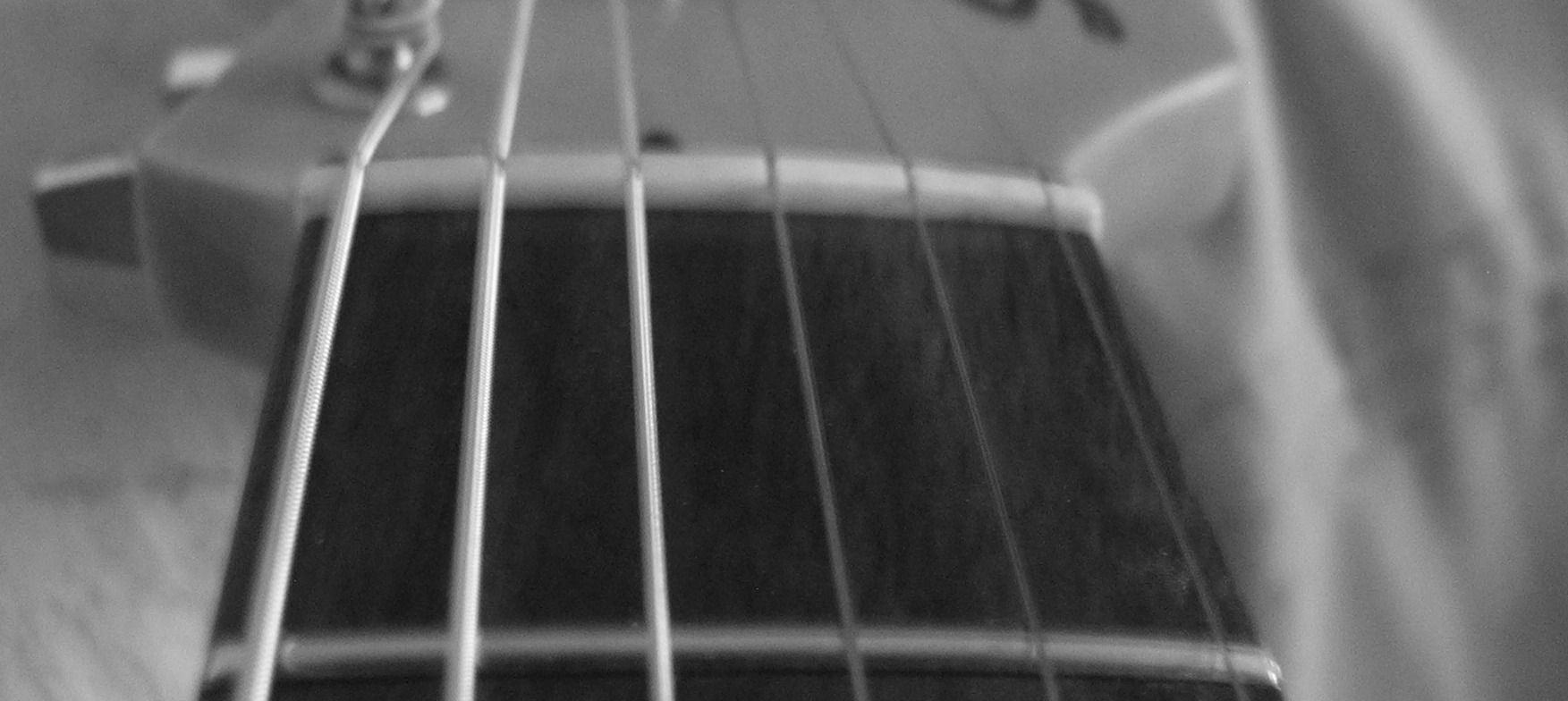At a very early age, I was shipped off to Strat-land. Something about the general shape appeals to me. Also, they look to be rather, uhm, basic. I have never fondled a Les Paul or SG, but looking at them in the shops I am sure they will be nice players. My first guitar is a twin-Humbucker, three-tuners-a-side head, but with the general double cutaway Strat shape. The past few years I have looked into "My Guitar", searching for what I perceive to be the best for me. Not that this results in buying a lot of guitars or even sitting in the shop for hours wearing out new guitars. Just an evaluation of my playing, and how to improve. Forming ideas of what an ideal (for me) guitar(s!) would be.
Soooo, the Couriers delivered a guitar last week, another Strat-alike, but this one much closer to being a Stratocaster, shape and equipment-wise. Very old, very well worn, much used, in need of general restoration work, if you prefer shiny like-new guitars. An honest working guitar. I realise that one can buy a brand new Squire/Cort/SX for a good price, and then upgrade the (insert details here) to make it “better”, and it might financially be a better choice, but, here’s the thing: These new Strat-copies have narrow necks, some as narrow as 40 mm (even less) at the nut, and it seems that 42 mm at the nut is as much wood as can be cut from a tree… My journey indicates I prefer a wider neck and string spacing.
This old guitar meausures 43 mm at the nut, with around 12 inch fretboard radius. It arrived with old 11-49 strings, much heavier than what I use, and sounded dead. The standard (still as glued by factory) platic nut had the string spacing narrower than some of my narrow-nut guitars. The tone pots do not, to my ears, although my wife insists they do. Staggered polepiece Alnico pickups. The pickups have a much stronger output than my other Strat-alike, surprisingly strong, but, surprise, not as much amplifier noise as the other guitar. Inspection shows the cavities are not shielded, so, maybe my other guitar has an earth problem?
Initial work entailed knocking down some frets (which popped out again when I changed the strings – sigh, I was hoping to avoid filing them) and stripping out the trem-block to clean out dust, lifting the pick guard to look at the wiring (messy, ouch, needs work, screw back on quickly), lightly water-papering the frets, cleaning the fretboard, hydrate oiling it, and making up a new bone nut with wider string spacing, as well as fitting new 10-46 strings (still heavier than my favourite Super Slinky 9-42…)
Bone nut. Now this is finicky with dof hands, as the nut is rather small, compared to a classical guitar. And, trying to get the string slots just the right size for the strings-to-be-used, is finicky too. The thinnest string ends up with a too-wide slot (I do not have thinner than 0.3 mm saw blades) while cutting-filing the upper slots is an exercise in patience and luck. I widened the string spacing to 37 mm, I could go more, if I live with strings being 2 mm from the edge of the frets.
The final setup took time to get the nut height just higher than as-low-as-I-can-go, setting intonation (bass E seems to be a problem…) and bridge height, and setting the truss rod to have just a tiny bit of dip.
Result? One very playable guitar! One step closer to what I “need”. Powerful, easy to play. Very good sound from my solid state amp, even can get the Boss DS1 to work well. A joy to play.
Future work:
• Re-do the electronics – new pots and re-routing/planning of wiring to get it “neat”, maybe replace the five-way switch too. Why do they have to blob everything onto the volume pot body, surely a small “bus bar” to ground everything to, with single, neat wiring to the pot bodies will suffice? Even a ring-clamp on the pot body to attach the grounds to? With block connectors to the output jack and body/tail earths? Easy, neat, less hassle.
• Shield the cavity and pickguard – the current shield is confined to the five-way switch and pots. Might not need more.
• Re-fret and clean up the fretboard – the current frets can take some filing still, but over the longer term, they will need to be replaced.
• New tuners – these nasty old cheap ones are rather loose after [edit] twenty years of hard work. But they work.
Strings: I had to decide whether to fit the thin Super Slinky’s or just some old strings I had here, seeing as I would need to strip down to work on the pots and frets later on again – I do not change out strings every time a cloud obscures the sun, not even every time it rains. I took out a set of Fender 350R Stainless, 10 – 46. Price on the pack is below R10. Googled “fret wear” and it seems the rumour mill has it that stainless strings eat frets. These frets are eaten enough, so I went with D’Addario EXL110, 10-46 nickel wound strings. Price on pack less than R20. Yes, I have been doing this guitar thing a while now, somewhere I have a set of Fender Bullets Light strings too, somewhere, bought 40 years ago.


